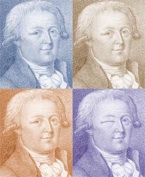~ CIM 2012 - Revealing and Listening to Scales From the Past; Tone Scale Analysis of Archived Central-African Music Using Computational Means
» By Joren on Friday 31 August 2012 What follows is about the Conference on Interdisciplinary Musicology and the 15th international Conference of the Gesellschaft fur Musikfoschung. First this text will give information about our contribution to CIM2012: Revealing and Listening to Scales From the Past; Tone Scale Analysis of Archived Central-African Music Using Computational Means and then a number of highlights of the conference follow. The joint conference took place from the 4th to the 8th of september 2012.
What follows is about the Conference on Interdisciplinary Musicology and the 15th international Conference of the Gesellschaft fur Musikfoschung. First this text will give information about our contribution to CIM2012: Revealing and Listening to Scales From the Past; Tone Scale Analysis of Archived Central-African Music Using Computational Means and then a number of highlights of the conference follow. The joint conference took place from the 4th to the 8th of september 2012.
In 2012, CIM will tackle the subject of History. Hosted by the University of Göttingen, whose one time music director Johann Nikolaus Forkel is widely regarded as one of the founders of modern music historiography, CIM12 aims to promote collaborations that provoke and explore new methods and methodologies for establishing, evaluating, preserving and communicating knowledge of music and musical practices of past societies and the factors implicated in both the preservation and transformation of such practices over time.
Revealing and Listening to Scales From the Past; Tone Scale Analysis of Archived Central-African Music Using Computational Means
Our contribution ton CIM 2012 is titled Revealing and Listening to Scales From the Past; Tone Scale Analysis of Archived Central-African Music Using Computational Means. The aim was to show how tone scales of the past, e.g. organ tuning, can be extracted and sonified. During the demo special attention was given to historic Central African tuning systems. The presentation I gave is included below and or available for download
Highlights
What follows are some personal highlights for the Conference on Interdisciplinary Musicology and the 15th international Conference of the Gesellschaft fur Musikfoschung. The joint conference took place from the 4th to the 8th of september 2012.
The work presented by Rytis Ambrazevicius et al. Modal changes in traditional Lithuanian singing: Diachronic aspect has a lot in common with our research, it was interesting to see their approach. Another highlight of the conference was the whole session organized by Klaus-Peter Brenner around Mbira music.
Rainer Polak gave a talk titled ‘Swing, Groove and Metre. Asymmetric Feels, Metric Ambiguity and Metric Transformation in African Musics’. He showed how research about rhythm in jazz research, music theory and empirical musicology ( amongst others) could be bridged and applied to ethnic music.
The overview Eleanore Selfridge-Field gave during her talk Between an Analogue Past and a Digital Future: The Evolving Digital Present was refreshing. She had a really clear view on all the different ways musicology and digital media can benifit from each-other.
From the concert programme I found two especially interesting: the lecture-performance by Margarete Maierhofer-Lischka and Frauke Aulbert of Lotofagos, a piece by Beat Furrer and Burdocks composed and performed by Christian Wolff and a bunch of enthusiastic students.
